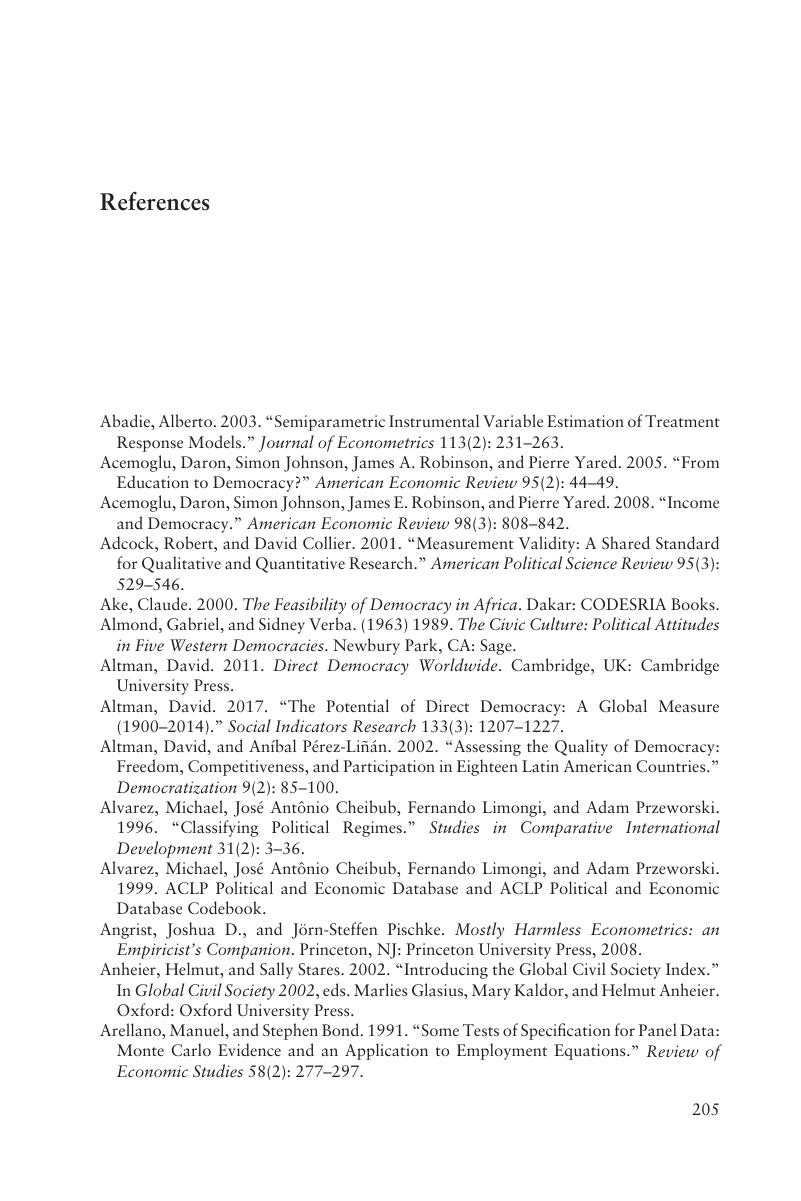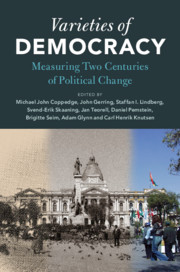Book contents
- Varieties of Democracy
- Varieties of Democracy
- Copyright page
- Contents
- Figures
- Tables
- Contributors
- Acknowledgments
- 1 Introduction
- 2 Conceptual Scheme
- 3 Data Collection
- 4 The Measurement Model and Reliability
- 5 Dimensions and Components of Democracy
- 6 Data Validation
- 7 Explanatory Analysis with Varieties of Democracy Data
- References
- Index
- References
References
Published online by Cambridge University Press: 25 January 2020
- Varieties of Democracy
- Varieties of Democracy
- Copyright page
- Contents
- Figures
- Tables
- Contributors
- Acknowledgments
- 1 Introduction
- 2 Conceptual Scheme
- 3 Data Collection
- 4 The Measurement Model and Reliability
- 5 Dimensions and Components of Democracy
- 6 Data Validation
- 7 Explanatory Analysis with Varieties of Democracy Data
- References
- Index
- References
Summary

- Type
- Chapter
- Information
- Varieties of DemocracyMeasuring Two Centuries of Political Change, pp. 205 - 220Publisher: Cambridge University PressPrint publication year: 2020

